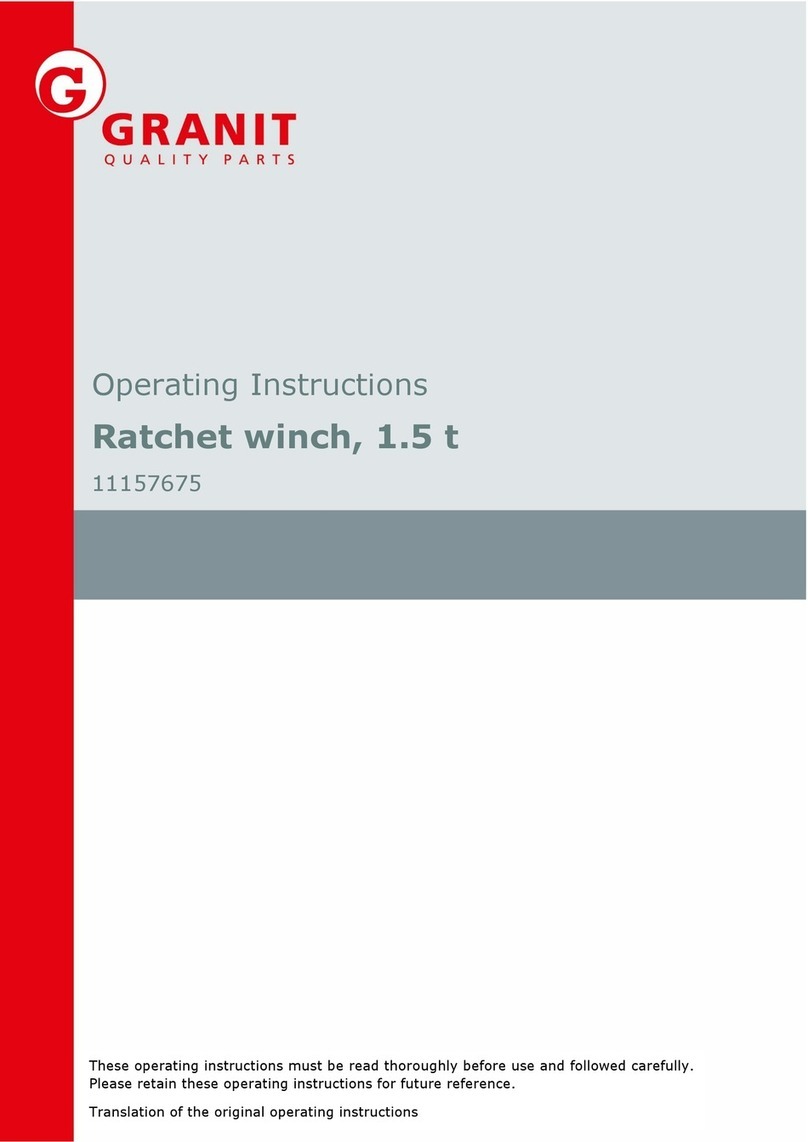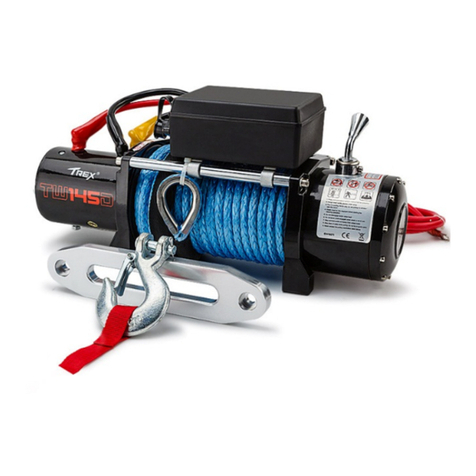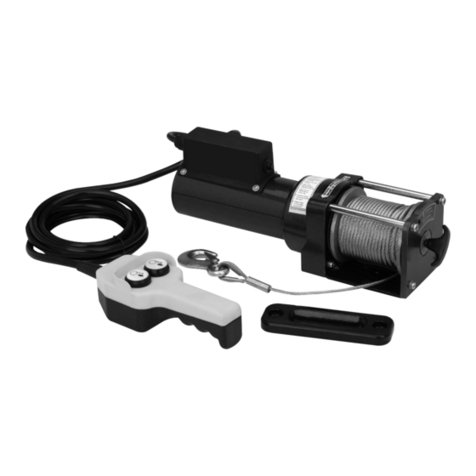
Page 9For technical questions, please call 1-800-444-3353.ATV Winch
Operation Precautions
1. Do not exceed load capacity. Be aware of
dynamic loading! Sudden load movement may
briefly create excess load causing product failure.
2. Do not maintain power to the winch if the
motor stalls. Verify load is within rated capacity
for the wire rope layer, see Winch Specifications
on pages 3 to 5. Make sure the battery is
fully charged. Use double line rigging whenever
possible, see ″Double Line Rigging″ on page 18.
3. Wear ANSI-approved safety goggles and
heavy-duty leather work gloves during operation.
4. Do not disengage clutch under load.
Engage clutch before starting.
5. Keep clear of fairlead when operating.
Do not try to guide wire rope.
6. Do not place finger(s) through hook. Fingers may
be caught and get pulled into fairlead or drum.
Use included strap to hold hook instead.
7. Stay out of the direct line that the wire rope is pulling.
If it slips or breaks, it will “whiplash” along this line.
Place heavy rag or carpet over wire rope span 6
feet from hook to help absorb the force released
if the wire rope breaks. (See Figure A.)
FIGURE A — WHIPLASH
DAMPENING BLANKET OR RUG
8. Do not use for lifting or moving people.
9. Use a spotter to assist you in ensuring that it
is safe to operate the winch. Make sure the
spotter is out of the way of the vehicle and
the wire rope before activating the winch.
10. Do not use the hand crank, if equipped,
to “assist” the winch.
11. Do not use vehicle to pull on the Wire Rope
and “assist” the winch.
12. Use as intended only. Do not lift items
vertically or use for aircraft purposes.
13. Prevent entanglement. Do not wear loose clothing
or jewelry, as they can be caught in moving parts.
Non-skid footwear is recommended. Wear restrictive
hair covering to contain long hair.
14. Disconnect battery cables before working
near the Wire Rope, drum, fairlead or
load, to prevent accidental starting.
15. Inspect before every use; do not use if damaged or
parts loose. Examine the winch for structural cracks,
bends, damage, frayed or kinked wire rope, and any
other conditions that may affect the safe operation
of the winch. Do not use the winch even if minor
damage appears. A kink permanently weakens the
wire rope, even after it is straightened out; kinked
wire rope can fail suddenly and must not be used.
16. Keep wire rope straight to avoid kinking the wire rope.
The illustrations below show how a kink
forms and how to prevent kinking.
a. This illustration shows a kink about
to form. At this point the winch
should be stopped and the wire
rope should be straightened out to
prevent kinking.
b. This wire rope is
kinked. It is too late
to reverse the
damage at this point, the
wire rope must be discarded.
It is permanently damaged and
must not be used.
c. This is a kinked wire rope that has been
straightened out. Even though it has been pulled
straight, some wires in the wire rope are stretched,
and others are severely bent, if not broken.
The unstretched wires will take more load and can
fail suddenly before the rope reaches its capacity.
This wire rope must be discarded and not be used.
A kink permanently weakens the wire rope,
even after it is straightened out; kinked wire rope
can fail suddenly and must not be used.
Brought to You by www.snapwhole.com






























